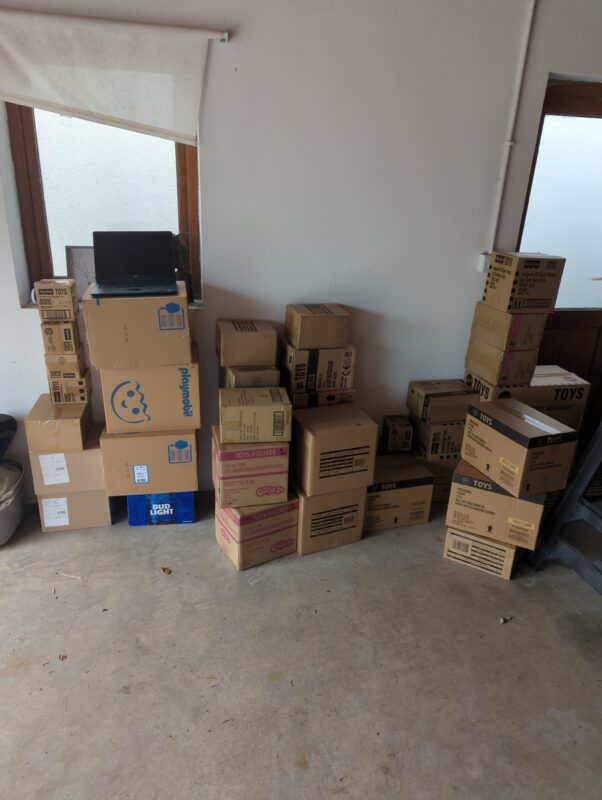In the competitive world of Amazon FBA (Fulfillment by Amazon), sellers are constantly on the lookout for strategies to boost their profit margins and streamline their operations. One such strategy involves the use of deal sheets, a tool that, while common in retail and wholesale, is often overlooked in the e-commerce space. But are deal sheets beneficial for Amazon FBA sellers? Let’s dive in to discover their potential impact.
What Are Deal Sheets?
Deal sheets are detailed documents that outline the terms of a business agreement between two parties, typically a vendor and a retailer. In the context of Amazon FBA, deal sheets can play a crucial role in negotiations, offering clarity on product details, pricing, minimum order quantities (MOQ), shipping terms, and more. By laying out these terms clearly, deal sheets can help prevent misunderstandings and ensure both parties are on the same page.
The Benefits of Using Deal Sheets for Amazon FBA Sellers
Clear Communication
One of the primary advantages of using deal sheets is the clear communication they facilitate. By having all terms of a deal documented, both sellers and suppliers can reference the agreed-upon conditions, reducing the likelihood of disputes.
Better Negotiation
Deal sheets empower sellers to negotiate better terms. With a clear understanding of costs and margins, sellers can confidently argue for pricing and terms that align with their business objectives.
Streamlined Operations
Deal sheets can significantly streamline business operations. They provide a comprehensive overview of the deal, making it easier to manage inventory, forecast demand, and plan for future growth.
Strategic Planning
Armed with detailed information from deal sheets, sellers can make informed strategic decisions, optimizing their product selection, pricing strategies, and supplier relationships to maximize profitability.
Potential Drawbacks
Despite their benefits, deal sheets are not without their drawbacks. They can be time-consuming to create and negotiate, especially for those new to the process. Additionally, the rigid structure of deal sheets might limit flexibility, making it challenging to adapt to unexpected changes in demand or supply chain disruptions.
Best Practices for Using Deal Sheets in Amazon FBA
To make the most of deal sheets, sellers should:
- Understand Your Margins: Before entering negotiations, know your profit margins to ensure the terms align with your business goals.
- Build Strong Relationships: Foster positive relationships with suppliers to negotiate better terms on deal sheets.
- Stay Organized: Keep your deal sheets well-organized and accessible for easy reference and management.
Conclusion
Deal sheets can be a powerful tool for Amazon FBA sellers, offering a host of benefits from clearer communication and better negotiation to streamlined operations and strategic planning. However, it’s essential to consider the potential drawbacks and implement best practices to ensure they serve your business effectively.
We’d love to hear from you! Have you used deal sheets in your Amazon FBA business? What was your experience? Share your thoughts and tips in the comments below.















Chaming news for all us
[b]Show your ferocity[/b] – [url=https://psee.io/663bfs][b]satisfy your sexual desire right now![/b][/url]
Wow news for all us
Awesome news for all us
Finest news for all us
[url=https://bit.ly/3EGKSVc][img]https://tripacostarica.com/1/tp/sr/1.png[/img][/url]
[b][u]Picture[/u][/b] yourself settled on the deck of a boat, a soft breeze fumbling with your hair, and around you stretching an limitless horizon, where the sea mixes with the air. There is no disturbance of cities, no roar of cars, just you and nature in its pristine beauty. Renting a ship is not just a tour, it is an access to experience absolute freedom of action and a deep union with the surrounding world, which is difficult to encounter in routine life. Why not perform this step now?
Self-determination is what is so lacking in the today’s individual, confined in deadlines, responsibilities and continuous notifications. When you lease a vessel, you become the leader of your fate. Want to go to a hidden beach where no one interrupts your quiet? Please! Want to explore hidden bays and islands that only regional fishermen know about? Easy! No pre-set routes, no restrictions — just you and your desires. You can rise at dawn to see the sun illuminating the water in golden hues, or spend the day snorkeling among marine reefs full of life. Booking a motorboat offers you ability, allowing you to experience as uninhibited as the wind that fills the sails.
[url=https://bit.ly/3EGKSVc][img]https://tripacostarica.com/1/tp/sr/2.png[/img][/url]
[b][u]But[/u][/b] autonomy is only one side of the chip. The other is a profound relationship with the world that cannot be perceived while sitting in an cubicle or wandering on sidewalk. Water is a pulsing organism that breathes, murmurs and sometimes challenges. Heeding the sound of the sea, sensing the salty air and watching the play of the dolphins, you begin to understand how trivial our daily bustle is compared to the magnitude of nature. Ship becomes your view into this world: you can lower anchor in the middle of the abyss, to reflect on the stars that seem more vivid than ever, or organize a picnic on the deck, bathed only by the sounds of nature.
Using a motorboat suits not only single travelers aiming for internal peace, but also for those who value engagement. Imagine this: you with mates or household sailing on a voyage, sharing stories under the celestial bodies, playing deck games on the deck, or simply enjoying the silence together. Yacht becomes your individual shelter, where there is no room for tedious routines or unwanted distractions. You can throw a romantic dinner at sunset, watching as the sky transforms into a array of vivid and lilac shades, or stage a vibrant party with music and moves under the endless sky. Every occasion on the boat is a opportunity to create experiences that will soothe you for many years.
[u][b]Of course[/b][/u], booking a boat is also an opportunity to enjoy convenience. Modern ships are fitted with all the necessary: from spacious cabins and prep spaces to baths and entertainment systems. You can think like you’re at a elite resort, but with the advantage of total mobility. Want to anchor in a place where there isn’t a single hotel? No problem! A ship will carry you where no train or airplane can reach. This awareness of exclusivity and self-reliance makes using a ship a exceptional experience that cannot be matched with anything else.
[url=https://bit.ly/3EGKSVc][img]https://tripacostarica.com/1/tp/sr/3.png[/img][/url]
But the [b][u]most crucial[/u][/b] thing is that renting a ship is attainable to anyone who longs of liberty and ventures. You don’t have to be an knowledgeable sailor — skilled crews and straightforward vessels will make your excursion secure and satisfying. You can choose a boat of any size and class: from mini models for duos to luxurious vessels for large crowds. The method of renting is easy: just set your preferences, select a route, and confide in the professionals. In just a few days, you will be able to be on the deck, noticing your heart beat in synchrony with the waves.
Don’t put off your aspirations for tomorrow. Absolute freedom of action and intense connection with the world are waiting for you. Book a ship right now and discover a world where there are no restrictions except those you establish yourself. Waves invites — heed its summons, and you will realize what actual liberty is. It’s not just a journey, it’s a approach that stimulates, revives, and suffuses with purpose. Make the first step — and let the wind lead you to where wishes become actuality!
Complete freedom of action and deep unity with nature!
[url=https://bit.ly/3EGKSVc][b]Try it right now )[/b][/url]
[b]Crave to revive fast[/b] – [u]grab a hot girl, gent or shemale![/u]
[b]There is a huge range of appealing shapes for you[/b] – [u]new, gorgeous, irresistible![/u]
[b][url=https://psee.io/663bfx]Hump their immediately![/url][/b]
[b]Crave to refresh quickly[/b] – [u]take a stunning chick, guy or transgender![/u]
[b]There is a vast range of delicious bodies for you[/b] – [u]fresh, gorgeous, hot![/u]
[b][url=https://psee.io/663bfz]Shag their right now![/url][/b]
[b]Desire to refresh instantly[/b] – [u]take a attractive lady, guy or trans![/u]
[b]There is a vast selection of appealing bodies for you[/b] – [u]teen, pretty, hot![/u]
[b][url=https://psee.io/663bfu]Bang their instantly![/url][/b]
[b]Your complete control[/b] with dynamic versatile equipment – [u]you transform into a racer, a navigator plus a discoverer![/u]
[b]Customize and enhance[/b] device to suit you – [u]master, explore, explore your surroundings in your own way![/u]
[b]Gain remarkable joy[/b] and amazing feelings – [u]thanks to your successes plus efforts![/u]
[url=https://psee.io/7dcler][b]Click here to order[/b][/url] fantastic unit that your friend hasn’t got [u]right now![/u]
[b]Need to boost instantly[/b] – [u]take a stunning chick, dude or crossdresser![/u]
[b]There is a large variety of luscious shapes for you[/b] – [u]youthful, gorgeous, hot![/u]
[b][url=https://psee.io/663bfn]Hump their instantly![/url][/b]
[b]Your total mastery[/b] with powerful functional machine – [u]you become a competitor, an aviator plus an explorer![/u]
[b]Modify and improve[/b] model for yourself – [u]grasp, investigate, explore your surroundings as you please![/u]
[b]Experience lasting joy[/b] and indescribable feelings – [u]due to your accomplishments and performances![/u]
[url=https://psee.io/7dcler][b]Click here to buy[/b][/url] neat device what your mate hasn’t got [u]right now![/u]
[b]Your complete command[/b] above dynamic practical device – [u]you’re a competitor, a pilot as well as a pioneer![/u]
[b]Tweak and improve[/b] device to your liking – [u]study, research, navigate your surroundings however you like![/u]
[b]Gain lasting delight[/b] and unique feelings – [u]from your victories plus performances![/u]
[url=https://psee.io/7dcler][b]Click here to buy[/b][/url] cool device what your mate doesn’t have [u]right now![/u]
[b]Your total mastery[/b] of strong capable gadget – [u]you’re a speedster, a pilot as well as an explorer![/u]
[b]Customize and improve[/b] unit just for you – [u]learn, study, venture into the environment as you please![/u]
[b]Feel memorable delight[/b] and indescribable sensations – [u]through your successes and outcomes![/u]
[url=https://psee.io/7dcler][b]Click here to get[/b][/url] cool unit that your pal doesn’t have [u]right now![/u]
[b]Brand fresh[/b] capsules for huge climaxes – larger well greater intense ecstasies!
[b]not observed[/b] formerly – highly current of clinical study exploration!
[b]Fully protected[/b] well powerful – also raised lust as indeed enhanced male rigidity!
[url=https://psee.io/7qlgd7][b]Elevate size with own releases promptly right now![/b][/url]
[b]Name recent[/b] pills to huge climaxes – expanded plus extra fierce ecstasies!
[b]no seen[/b] earlier – exceptionally recent inside healing research research!
[b]Entirely harmless[/b] well effective – likewise elevated desire also truly enhanced genital hardness!
[url=https://psee.io/7qlgd7][b]Boost size at own discharges right right now![/b][/url]
[b]Label fresh[/b] caplets to immense ecstasies – expanded also further strong culminations!
[b]by noticed[/b] before – extremely newest inside health research study!
[b]Fully protected[/b] also efficient – likewise elevated lust also even boosted erectile stiffness!
[url=https://psee.io/7qlgd7][b]Increase size of own expulsions promptly right now![/b][/url]
[b]Full Throttle Summer Savings Event![/b]
[b]Winding are just discounts[/b] – on props and gear [b]DJI[/b], [b]GEPRC[/b], [b]RadioMaster[/b], [b]Ethix[/b], [b]TBS[/b], [b]Lumenier[/b], [b]Flywoo[/b], [b]EMAX[/b] and shop now before!
[url=https://psee.io/7zu6yq][b]GetFPV’s Full Throttle Summer Savings event is on![/b][/url]
[b]Full Throttle Summer Savings Event![/b]
[b]Summer’s are hot discounts[/b] – on everything and from [b]DJI[/b], [b]GEPRC[/b], [b]RadioMaster[/b], [b]Ethix[/b], [b]TBS[/b], [b]Lumenier[/b], [b]Flywoo[/b], [b]EMAX[/b] and more now good!
[url=https://psee.io/7zu6yq][b]GetFPV’s Full Throttle Summer Savings event is on![/b][/url]
[b]We’re on hand to solve the crisis[/b] — a professional team ready to handle your plumbing disaster and reinstate peace in your property!
[b]Our swift response helps[/b] – minimize the need for high-cost major overhauls in the future.
[b][url=https://psee.io/7ygm8w][u]Try our rapid and excellent[/u] work – right now![/b][/url]